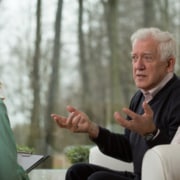Historical Consulting and Partnership
The prospect of putting your organization’s story down on paper can be daunting. The most perplexing questions have to do with content: what if we do not get the story right? What if people feel left out? What if we learn things that do not conform to our current aspirations? A second tier of concerns are less existential but are in some ways more worrying: how will we provide all the research? Where will we get the time to review? How will we handle design and printing? I have already got a job to do, how can I take on a project as big as this? As an expert at historical consulting, I can answer these questions and lift most of the burdens of the project from your shoulders, yet help you maintain the control over the project that you need to have.
The Proposal
Partnering should begin during the proposal stage. Opening discussions are wide-ranging. Potential clients usually share what they know about their story and what they hope to gain from the historical consulting relationship. I often take the opportunity to assess the availability of documentary sources and discuss a preliminary list of oral history interviewees.
The next step is to narrow things down and scope out the project. The best place to start is the product—is it a simple as a historical timeline for the website or a more complex on-line history? If it is a print product that you are looking for, is it a brief illustrated pamphlet, a full-scale coffee table book, or something in between? A historical consultant can help you decide by comparing costs and timetables. The type of product helps determine how many interviews are appropriate and how much time and effort will be required for documentary and photo research.
At the close of these discussions I usually draft a proposal that describes the product we are going to end up with and lays out concrete steps for getting there. Although I usually get it right the first time, the proposal itself can be revised after the potential client’s review.
As the project gets underway, clients often begin assembling a history advisory committee. This can be an important component of the partnership since those administering the history project day to day are not always able to make firm decisions regarding content. A history advisory committee can represent stakeholders throughout the organization who are willing to provide feedback on the book’s approach and content. In my experience the most effective history advisory committees are relatively small, with three to five people. Most importantly, the members must be empowered to make decisions.
Research and Interviewing
The prospect of research is usually daunting for clients. Typical questions are “what if we don’t have enough material?” or “what if we don’t have time to organize our records?” The good news is that doing research is the job of your historical consultant and need not consume a great deal of your time. Most organizations do not have formal archives, and that is alright with me. My chief requirements are simple: access to your historical records, a table to work on, and an outlet to plug in a computer and scanner. Sometimes documentary sources like old newsletters, reports, and minutes are well organized if not archived, other times they are thrown haphazardly in boxes, closets, or banks of filing cabinets. It should not matter to an experienced historical consultant. I review them systematically, scanning or photographing what I deem to be important and putting everything back the way I found it.
I will need to partner more closely when it comes to arranging the interviews. After we have come up with an interview list, I rely on the client to make the initial contact—to let interviewees know that it is a project sanctioned by the organization and that their cooperation with its historical consultant is appreciated. I follow up to schedule the interviews. While sessions can be by phone or at a retired interviewee’s home, for those currently employed, an office or a conference room is suitable. If clients expect to leverage these interviews in the future, I usually leave it to them to follow up and have the interviewee sign a release form, which I can provide.
While the oral history stage with its administrative tasks can be one of the most demanding for a client, it is also a great opportunity for an organization to ensure constructive input on content. Just by meeting a number of people from your organization, a historical consultant can get a strong sense of corporate culture and values. That goes a long way to ensure that the project meets your expectations.
Developing the Story
Depending on your availability during the research stage, we may have spoken at length about the developing story, but the outline stage is where that communication is formalized.
With documentary research and interviewing largely complete, your historical consultant should produce an outline that, in just a few pages, shows how the book will be structured, lays out the central themes of each chapter, identifies the key events and initiatives that will be covered in each of them, and describes how chapters are structured so as to build upon one another in pursuit of an overall theme for the book.
After a client reviews my outline, we usually take the opportunity to discuss the emerging themes and consider how they fit with your current organizational priorities well in advance of writing. We adjust the outline and I submit revisions as necessary until the client is satisfied that we are embarking on writing their book.
The next step is one that most clients have been anticipating all along: review of drafts. If the book project is a sizeable one, your historical consultant will generally submit one or two preliminary chapters for early review so that both parties can discuss the style, tone, and overall approach to the writing before moving on to next chapters. For smaller books, however, it is far more efficient just to draft the entire text and submit it for review in entirety.
This is the point where the history advisory committee usually comes into full play. While it is invaluable to have multiple perspectives on revisions, the review process also exposes some of the challenges of the committee system—namely that those members who actively participate (and some will not) often have differing views about big things such as whether or how a certain subject should be covered, and small things like appropriate subtitles—even punctuation.
I would like to be able to coordinate and incorporate all of the input myself. Unfortunately, this is usually not possible, since very often suggested edits are mutually conflicting. Therefore I usually relay on my main point of contact to pull together all edits. If I work from one master document, I can be sure that I am making the right changes, doing additional research and reconceptualizing in a way that fits organizational, rather than individual expectations.
One last note about this step of the partnership. My direct clients usually take the manuscript review process seriously and work hard at it. Very often, however, senior management fails to invest much time at this point reviewing what is, to them, just a preliminary version of the book. If anything holds a project up, it is usually failure to fully review in manuscript and the resulting need to review in layout, late in the process.
Last Chapter Issues
The last chapter of a commissioned history can be sensitive, controversial, and difficult. But there is no way of avoiding the challenge. Well, there is. I once had a client that, after grappling with the prospect of putting its recent history down on paper, opted to cut the narrative short by twenty years in the name of “objectivity.” But for most institutional clients it is precisely the opportunity to root the present in the past that makes a corporate history book desirable.
So that leaves us with the last chapter challenge. Sometimes there are real problems to be sorted out—how much to document dead-ends like completely failed initiatives? Which people to feature and which to sketch in briefer profile? In the end, grappling with these questions and making a decision is precisely what the client has hired the historical consultant to do in the first place. Having studied the entire history of an organization closely and faced with bringing the story to an authentic close, I have never had any trouble doing it. The people who have lived the history however, members of the advisory committee or senior management, often have a tougher time.
The reason is entirely understandable. Everyone’s lived experience is unique. The historical consultant draws all of those experiences together, corroborates them with the written record, and creates an overarching narrative. This best effort to draw all of those views of the past together into a synthesis inevitably fails to square with any one individual’s version of what really happened and why.
In rare cases, senior management will pull rank and decides that his or her version of certain events should be written into the narrative, which is not a problem if this is simply a matter of emphasis or interpretation. Far more often, however, people just need time to get used to the story. This is almost certainly the first time they have seen the efforts of a lifetime written down. Sometimes this period of adaptation takes a while—weeks or even months—but I am happy to work with clients while they make it and hope that it does not bust a deadline.
Partnering in Production
By the time we are both growing comfortable with your fresh new history, we are also looking towards production. This is the point where the partnership can change. Some clients opt to do design and printing themselves. In that case, the historical consultant’s role may be to provide a kit containing all of the components of the book (if it is an illustrated history that includes text, photographs, sidebars, and front and back matter). Even if the client chooses to proceed on its own, I am always happy to conduct a last proof or two. If senior managers have not paid sufficient attention during the draft stage, I am also happy to work on comprehensive revisions in the layout stage as well.
In most cases, clients rely on me to coordinate design and printing. I generally provide them with samples from two or three book designers that I know well so that they can make a selection that fits. I coordinate the process of design, from comps through layout, translating designers’ concerns into plain English for the client and vice versa.
The same goes with printing. From the proof stage through delivery I work with clients so they understand the importance of paper types, cloth samples, foil, and bands and make the choice that fits their requirements for quality, budget, or a compromise of both.
This process can often be an uncomfortable one, particularly if the project, as it often does, has stalled in the layout stage and is approaching a deadline with only days to spare. A good historical consultant should be used to it. But I still breathe a big sigh of relief when I hear that the truck from the bindery has been to the client’s facility and left the loading dock.
If you are considering undertaking a corporate history or anniversary book project, an expert in historical consulting can take the load off your shoulders yet ensure that you have the input required to make it your book.
Give me a call to talk about partnering on your history project.


 Public
Public


